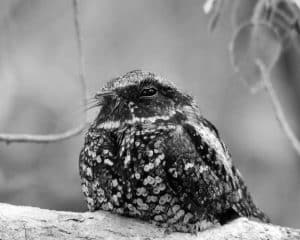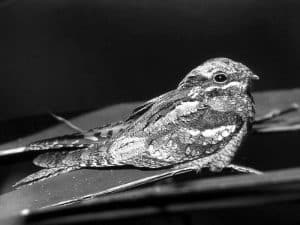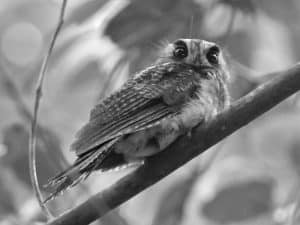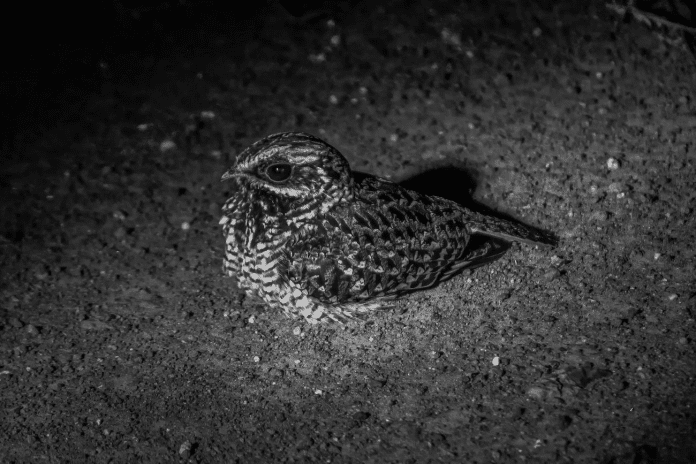Nightjars and Allies: A Hidden World in Tanzania
Tanzania, a country known for its diverse wildlife and breathtaking landscapes, is also home to a wide variety of nocturnal bird species. Among these fascinating creatures are the nightjars and their allies, a group of birds that are renowned for their unique characteristics and behaviors. In this guide, we will take you on a journey to discover the captivating world of nightjars and allies in Tanzania, from their importance in the ecosystem to the best locations for spotting these elusive birds. Whether you are a seasoned birdwatcher or a curious nature enthusiast, Tanzania’s nocturnal bird species will undoubtedly leave you in awe.
The Importance of Tanzania for Nocturnal Bird Species

Tanzania’s rich biodiversity makes it a crucial habitat for numerous bird species, including the nightjars and their allies. These birds play a vital role in maintaining the balance of the ecosystem, including controlling insect populations and pollinating plants. Nightjars, with their cryptic plumage and silent flight, are expert predators of nocturnal insects. Their allies, such as the owlet-nightjars and potoos, also contribute to the delicate ecological web by preying on insects and small vertebrates.
Moreover, Tanzania’s diverse landscapes provide a wide range of habitats for these birds to thrive. From the vast savannahs of the Serengeti to the lush forests of the Eastern Arc Mountains, each region offers unique opportunities to observe different species of nightjars and their allies. By understanding the importance of Tanzania for these nocturnal bird species, we can further appreciate the need for their conservation and protection.
Common Species of Nightjars and Allies in Tanzania
Tanzania is home to a variety of nightjar species, each with its own distinct characteristics and calls. One of the most common species is the fiery-necked nightjar (Caprimulgus pectoralis). With its striking plumage and haunting calls, this bird is a favorite among birdwatchers. Another notable species is the square-tailed nightjar (Caprimulgus fossii), known for its square-shaped tail feathers and intricate patterns.
In addition to nightjars, Tanzania also hosts a diverse array of allies, including the African wood owl (Strix woodfordii) and the rufous-cheeked nightjar (Caprimulgus rufigena). These birds, with their unique adaptations and behaviors, contribute to the charm and intrigue of Tanzania’s nocturnal birdlife.
Unique Characteristics and Behaviors of Nightjars and Allies
Nightjars and their allies possess several fascinating characteristics and behaviors that make them stand out from other bird species. One of their most notable features is their cryptic plumage, which allows them to blend seamlessly into their surroundings. This natural camouflage serves as a defense mechanism against predators and aids in their hunting strategy.
Another remarkable trait of nightjars and allies is their ability to navigate and hunt in low light conditions. Their large eyes are adapted to capture even the faintest traces of light, enabling them to locate and catch insects with remarkable precision. Additionally, many species of nightjars have wide mouths and bristles around their bills, which help them capture insects on the wing.
Furthermore, nightjars and allies are known for their vocalizations, which are often heard during the twilight hours. Their haunting calls, ranging from soft purring sounds to eerie trills, add to the mystique of these birds and make nighttime birdwatching an unforgettable experience.
Best Locations for Spotting Nightjars and Allies in Tanzania

To maximize your chances of spotting nightjars and their allies in Tanzania, it is essential to visit the right locations. One of the prime areas for nocturnal birdwatching is the Selous Game Reserve. This vast wilderness is home to a wide variety of bird species, including several nightjar and owl species. The open grasslands and riverine forests provide an ideal habitat for these birds, making Selous a must-visit destination for bird enthusiasts.
Another excellent location for observing nightjars and allies is the Ngorongoro Conservation Area. This unique ecosystem, with its crater floor and surrounding highlands, harbors diverse birdlife, including several species of nightjars. The nearby Lake Manyara National Park is also known for its abundance of nocturnal bird species, making it a rewarding destination for birdwatchers.
Moreover, the southern highlands of Tanzania, including the Udzungwa Mountains and the Kitulo Plateau, offer opportunities to spot rare and endemic nightjar species. These remote and less-explored regions are havens for birdlife, providing a chance to observe elusive species in their natural habitat.
Recommended Time of Year for Birdwatching in Tanzania
The best time for birdwatching in Tanzania, including observing nightjars and their allies, is during the dry season, which typically runs from June to October. During this period, the weather is more predictable, and the vegetation is less dense, making it easier to spot birds.
Within the dry season, the months of July and August are particularly favorable for birdwatching, as many species engage in courtship displays and nesting activities. The clear skies and cooler temperatures also make nighttime birdwatching more comfortable and enjoyable. However, it is important to note that specific species may have different breeding seasons and behaviors, so it is advisable to consult local birding experts or guides for the most up-to-date information.
Tips for Observing Nightjars and Allies in Their Natural Habitat

Observing nightjars and their allies in their natural habitat can be a rewarding experience, but it requires patience, preparation, and respect for the birds and their environment. Here are some tips to enhance your birdwatching adventure:
- Choose the right equipment: A pair of binoculars and a field guide specific to Tanzanian bird species are essential tools for identifying and observing nightjars and their allies.
- Be mindful of the environment: Avoid disturbing the birds or their nesting sites. Stay on designated paths and follow any guidelines or regulations set by the national parks or reserves.
- Use your senses: Listen for the distinct calls of nightjars and allies, as they are often easier to identify by sound rather than sight alone. Pay attention to their flight patterns and behaviors, which can reveal valuable insights into their natural history.
- Join a guided tour: Consider joining a birdwatching tour led by experienced guides who are knowledgeable about Tanzania’s nocturnal bird species. They can provide valuable insights and increase your chances of spotting these elusive birds.
Conservation Efforts for Nightjars and Allies in Tanzania
Conservation plays a crucial role in protecting Tanzania’s nightjars and their allies, ensuring that future generations can continue to appreciate their beauty and ecological significance. Several organizations and initiatives are working towards the conservation of Tanzania’s avian biodiversity.
The Wildlife Conservation Society of Tanzania (WCST) is actively involved in monitoring and protecting bird species, including nightjars and their allies, through field research and community engagement. Their efforts focus on habitat preservation, awareness campaigns, and sustainable tourism practices to minimize the impact on bird habitats.
Additionally, the Tanzania Bird Atlas Project collects data on bird sightings from citizen scientists and researchers, contributing to the understanding of distribution patterns and population trends of nightjars and other bird species. This information aids in the development of effective conservation strategies.
By supporting these conservation efforts and promoting responsible tourism practices, we can contribute to the preservation of Tanzania’s unique birdlife for generations to come.
Other Notable Bird Species in Tanzania
While exploring Tanzania’s nocturnal bird species, it is worth noting that the country is also home to a diverse array of diurnal bird species. From the majestic African fish eagle to the vibrant Lilac-breasted roller, Tanzania boasts an impressive avian population.
The Serengeti National Park alone is home to over 500 bird species, making it a birdwatcher’s paradise. The iconic Maasai giraffe, with its distinctive patterned coat, can also be spotted in Tanzania’s national parks, along with other large mammals such as elephants, lions, and zebras.
Conclusion and the Future of Birdwatching in Tanzania
Tanzania’s nightjars and allies offer a glimpse into the hidden world of nocturnal birdlife, captivating birdwatchers and nature enthusiasts alike. Their unique characteristics, behaviors, and the diverse landscapes they inhabit make Tanzania a premier destination for birding adventures.
As we continue to discover and appreciate the fascinating world of nightjars and allies, it is crucial to support conservation efforts and promote sustainable tourism practices. By doing so, we can ensure the preservation of Tanzania’s avian biodiversity for future generations to enjoy.
So, pack your binoculars, grab a field guide, and embark on an unforgettable journey to discover the mesmerizing world of nightjars and allies in Tanzania. Let the symphony of their calls and the beauty of their flight enchant you as you witness the magic of Tanzania’s nocturnal bird species.


































